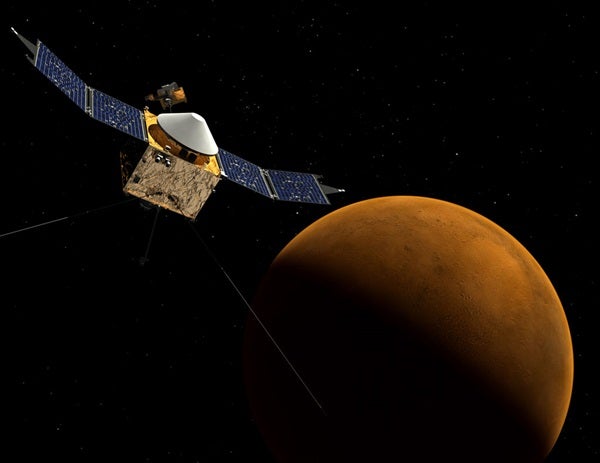NASA announced today that the University of Colorado at Boulder-led mission to Mars to investigate how the planet lost much of its atmosphere eons ago has been approved by the space agency to move into the development stage.
The effort, known as the Mars Atmosphere and Volatile Evolution (MAVEN) mission, will probe the past climate of Mars, including its potential for harboring life over the ages. The University of Colorado’s Laboratory for Atmospheric and Space Physics (LASP) is leading the mission, which will carry three instrument suites to probe the atmosphere of Mars and its interactions with the Sun, said Bruce Jakosky from the University of Colorado.
“A better understanding of the upper atmosphere and the loss of volatile compounds like carbon dioxide, nitrogen dioxide, and water to space is required to plug a major hole in our understanding of Mars,” said Jakosky. “We’re really excited about having the opportunity to address these fundamental science questions.”
Clues on the martian surface, including features resembling dry riverbeds and minerals that only form in the presence of water, suggest Mars once had a denser atmosphere that supported the presence of liquid water on the surface. Since most of the atmosphere was lost as part of a dramatic climate change, MAVEN will make definitive scientific measurements of present-day atmospheric loss that will offer insight into the Red Planet’s history.
“The team has successfully met every major milestone since selection 2 years ago,” said David Mitchell of NASA’s Goddard Space Flight Center in Greenbelt, Maryland. “Looking forward, we are well positioned for the next push to critical design review in July 2011. In 3 short years, we will be heading to Mars.” Launch is scheduled for November 2013.
The three instrument suites on MAVEN will include a remote-sensing package built by LASP that will determine global characteristics of the upper atmosphere. The MAVEN science team includes three LASP scientists heading up instrument teams, as well as a large supporting team of scientists, engineers, and missions operations specialists.
The confirmation review announced today authorized continuation of the project and set its cost and schedule. The next major mission milestone, the critical design review, will examine the detailed MAVEN system design. Assuming the critical design review is successful, the project team will assemble the spacecraft and its instruments.










